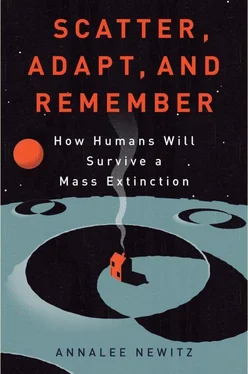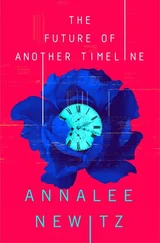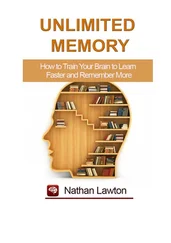2. human effective population size: N. Takahata, Y. Satta, and J. Klein, “Divergence Time and Population Size in the Lineage Leading to Modern Humans,” Theoretical Population Biology 48 (October 1995): 198–221.
3. Toba catastrophe: Richard Dawkins, The Ancestor’s Tale, A Pilgrimage to the Dawn of Life (Boston: Houghton Mifflin Company, 2004).
4. But, as John Hawks, an anthropologist at the University of Wisconsin, Madison, put it to me: Personal interview, November 29, 2011.
5. according to the anthropologist Ian Tattersall of the American Museum of Natural History: Personal interview, December 13, 2011.
6. we were part of a hominin group: Most of the evolutionary history I describe here comes from Richard Klein’s indispensable evolutionary biology text The Human Career: Human Biological and Cultural Origins (Third Edition) (Chicago: University of Chicago Press, 2009). In this book I’m following today’s accepted scientific practice of referring to humans and our ancestors as “hominins.” Hominids include the greater group of humans and apes (and their ancestors).
7. But as the Stanford paleoanthropologist Richard Klein told me: Personal interview, November 30, 2011.
8. but the University of Utah geneticist Chad Huff recently argued: Chad Huff et al., “Mobile Elements Reveal Small Population Size in the Ancient Ancestors of Homo Sapiens,” PNAS 107 (February 2, 2010): 2147–52.
9. As Hawks explained in a paper he published with colleagues in 2000: Hawks et al., “Population Bottlenecks and Pleistocene Human Evolution,” Molecular Biology and Evolution 17 (2000): 2–22.
10. That’s how speciation creates a genetic bottleneck: It’s worth noting that the definition of “species” can get as messy as evolution itself. For example, two classes of species may look similar but have very different genetic backgrounds, like bats (from the class Mammalia) and birds (from the class Aves); two species can crossbreed and produce viable offspring, like bonobos and chimps; and two very different-looking animals might actually be the same species at different stages in their development, like tadpoles and frogs. Scientists who study phylogeny, the family trees that define a species, use many rubrics to draw boundaries between species, but there are no absolute rules. But when two groups’ genetic makeup, body shape, and behaviors diverge enough, they are generally said to be separate species. There is a great deal of debate over where to draw species lines between ancient human groups, but we can say for certain that today’s H. sapiens descended from a pretty small genetic pool—and speciation could be part of what made that pool smaller.
11. his book Prehistoric Art: Randall White, Prehistoric Art: The Symbolic Journey of Humankind (New York: Abrams, 2003).
12. In his book The Mating Mind: Geoffrey Miller, The Mating Mind: How Sexual Choice Shaped the Evolution of Human Nature (New York: Anchor Books, 2001).
13. The 10,000 Year Explosion: Gregory Cochran and Henry Harpending, The 10,000 Year Explosion: How Civilization Accelerated Human Evolution (New York: Basic Books, 2010).
14. humans bred themselves to be the ultimate survivors: It seems counterintuitive to say that we’re survivors when most of us have been taught that genetic diversity is vital to species health. Does our low genetic diversity mean that we’re weaker than other species? In some cases, as we’ll see later, it can be a vulnerability. However, the kind of inbreeding that creates low effective population size is not the same thing as inbreeding between close relatives like a brother and sister, which can result in genetic defects. Indeed, as Murdoch University’s geneticists Alan Bittles and Michael Black point out in a paper about human “consanguinity,” or inbreeding, it was long considered acceptable for second cousins and more distant relatives to marry in Western cultures—and is still common in many parts of the world. Such marriages have few deleterious effects, and as we’ve seen, these traditions grow out of what is probably a very ancient human practice in founder populations. Inbreeding between distant relatives seems to be the human norm.
15. DNA extracted from the fossils of Neanderthals and other hominins: Svante Pääbo et al., “A Draft Sequence of the Neanderthal Genome,” Science 328 (May 7, 2010): 710–22.
CHAPTER SEVEN: MEETING THE NEANDERTHALS
1. Neanderthals used tools and fire: See Brian Fagan, Cro-Magnon: How the Ice Age Gave Birth to the First Modern Humans (New York: Bloomsbury Press, 2011).
2. Neanderthals were mostly meat-eaters: Fagan, Cro-Magnon .
3. Richard Klein: Personal interview, November 30, 2011.
4. possibly with red hair: The possibility of some Neanderthals having pale skin and red hair is raised in Carles Lalueza-Fox et al., “A Melanocortin 1 Receptor Allele Suggests Varying Pigmentation Among Neanderthals,” Science 318 (2007): 1453–55.
5. Many Neanderthal skeletons are distorted by broken bones that healed: Joe Alper, “Rethinking Neanderthals,” Smithsonian Magazine (June 2003).
6. a generous estimate: John Hawks, personal correspondence, October 9, 2012.
7. many scientists believe: V. Fabre, S. Condemi, and A. Degioanni, “Genetic Evidence of Geographical Groups Among Neanderthals,” PLoS ONE 4 (2009): e5151.
8. A 60,000-year-old Neanderthal grave: Jennifer Viegas, “Did Neanderthals Believe in an Afterlife?” Discovery News (April 20, 2011).
9. Neanderthals talked or even sang: See Steven Mithen, The Singing Neanderthals (Cambridge: Harvard University Press, 2007).
10. two dominant theories: John Relethford, “Genetics of Modern Human Origins and Diversity,” Annual Review of Anthropology 27, (1998): 1–23.
11. Rebecca Cann and her colleagues found a way to support: Rebecca L. Cann et al., “Microbial DNA and Human Evolution,” Nature 325 (1987): 31–36.
12. Popularized by Wolpoff and his colleague John Hawks: See Milford Wolpoff and John Hawks, “Modern Human Origins,” Science 241 (August 12, 1988): 772–74.
13. “out of Africa” migration is based on an artificial political boundary: According to Clive Finlayson, who writes, “The first proto-humans would have gradually expanded into favorable habitats wherever these were.” Clive Finlayson, The Humans Who Went Extinct (Oxford: Oxford University Press, 2009).
14. Hawks has presented compelling genetic evidence: John Hawks, Gregory Cochran, Henry C. Harpending, and Bruce T. Lahn, “A Genetic Legacy from Archaic Homo,” Trends in Genetics 24 (January 2008): 19–23.
15. the truth lies somewhere in between African replacement and multiregionalism: The middle-of-the-road take on all this is often dubbed the “assimilation theory.” Anthropologist Vinayak Eswaran (see Vinayak Eswaran et al., “Genomics Refutes an Exclusively African Origin of Humans,” Journal of Human Evolution 49 [July 2005]: 1–18) and his colleagues take this perspective in a paper in which they argue that genetic evidence suggests that there were two distinct waves of immigration out of Africa—the archaic human one and the H. sapiens one. But as H. sapiens moved out into the world, they assimilated the local Neanderthal peoples, along with their other cousin H. erectus in Asia.
So basically, in the assimilation-theory model, H. sapiens didn’t destroy their kindred, nor were they deeply interrelated with them as in the multiregional theory. They met them as strangers, but forged alliances and formed families with them. Gradually, though, H. sapiens became the dominant culture.
Читать дальше






![Аннали Ньюиц - Автономность [litres]](/books/424681/annali-nyuic-avtonomnost-litres-thumb.webp)





